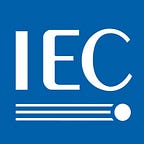Smart buildings for a smarter way of life
by Peter Feuilherade
The concept of a smart building has evolved over the last four decades and now generally refers to the integration of a range of systems that improve the lifestyles of a building’s occupants and the efficiency of its operations, especially its consumption of energy and other utilities. The automation of building operations, management and maintenance is integral to the concept.
In the words of the US-based Institute for Building Efficiency, “at the most fundamental level, smart buildings deliver useful building services that make occupants productive (e.g. illumination, thermal comfort, air quality, physical security, sanitation, and many more) at the lowest cost and environmental impact over the building lifecycle.”
Smart buildings are often, but not exclusively, associated with the smart city, a term originally used to signify the roles of technology and innovation in urban development, but now increasingly linked with achieving sustainability.
Wide range of features
Achieving a smart building’s aims, for economic and environmental reasons, involves the use of a wide range of features including adaptive lighting with occupancy sensing; smart meters that display overall use of electricity and help consumers to monitor and reduce their usage; sensors that gather and wirelessly communicate alerts or data about heat, light, movement and use of space; and the exchange of data between different systems. The cost of wireless sensors has dropped below USD 10 per unit and makes the installation of a smart building management system increasingly affordable.
With commercial buildings accounting for 40% of global energy consumption and contributing 20% of the carbon emissions, BEMS (building energy management systems) can help minimize energy use and cost. Smart buildings play a vital role in the effectiveness of Smart Grids, by helping to align energy generation with energy consumption.
Buildings can receive requests to reduce demand when wholesale prices are high or when grid reliability is jeopardized. A smart building management system can also usually detect when an item of equipment is close to failure and alert staff to deal with the problem.
The main forces driving the smart building market are the ability to reduce carbon dioxide emissions, cut maintenance and operating costs and enhance the life of the building as well as improving the comfort and security of its occupants.
Asia and Middle East lead
Although Europe and North America pioneered smart cities in the 1980s-90s, more smart buildings are now being built from scratch in the Middle East and even more so in Asia, with its soaring rates of urbanization.
Smart buildings can be found in new developments such as Masdar City in the UAE (United Arab Emirates), Lusail City in Qatar, King Abdullah Economic City in Saudi Arabia, Songdo in South Korea and Fujisawa in Japan. China is home to about 500 smart city pilot projects, with an emphasis on water and energy infrastructure, energy-efficient buildings and traffic management.
The Middle East, despite enjoying low energy costs, is also a prolific source of progressive smart building design. Qatar, Saudi Arabia and the UAE allocated more than USD 63 billion to develop smart city projects between 2012 and 2017. The aim of the developers of the USD 22 billion project in Masdar City, 17 km from Abu Dhabi, was to create the world’s first zero-carbon, zero-waste city, with the emphasis on energy efficiency.
Huge developing market
The US-based market research and consulting firm Navigant Research predicts that the worldwide market for BEMS, driven by technology advances as well as growing familiarity among customers with the benefits they bring, will grow from $4.0 billion in 2017 to $13.1 billion by 2026. The market will be concentrated in North America and Europe, although the Asia-Pacific market is where growth is fastest.
According to Navigant, the trillions of dollars that will be spent on urban infrastructure present “an immense opportunity for new transport management systems, Smart Grids, water monitoring systems, and energy efficient buildings”.
The smart buildings market, along with other “smart” sectors such as energy, water and transport, is a major contributor to the worldwide growth of the overall smart cities market.
The US company IDC Energy Insights forecasts smart building technology spending to grow from $6.3 billion in 2014 to $17.4 billion in 2019, registering a compound annual growth rate (CAGR) of 22.6%. The most aggressive adoption will be in Asia/Pacific, North America, and Western Europe.
Energy and electricity are key
The IEC develops International Standards covering a broad range of systems, equipment and applications used in the construction and maintenance of smart buildings, encompassing lighting, automation, access control, energy systems, appliances, elevators and escalators, among others. The work of IEC TCs (Technical Committees) plays a vital role in helping to ensure safety as well as interoperability.
Smart building technologies such as wireless sensors are becoming increasingly interoperable. Several technologies are converging in building controls that will, for example, allow light sources to carry out a dual role as sensors and information nodes too in a distributed network, managing heat, air conditioning, and building security as well as office lighting.
Cloud-based technology will have a growing impact on how intelligent buildings are run, linking them with power grids and multimodal transport systems.
There is a strong business case for strategic investments in smart building technologies which help to reduce facility operating costs over time. However, some property owners and investors still need persuading. In the view of Leo O’Loughlin, senior vice-president of Jones Lang LaSalle’s energy and sustainability services business, “not everyone is aware that the tremendous advantages of today’s affordable smart building management technologies easily justify the cost.”
This is an edited version of a story that originally appeared in the 09/2013 edition of e-tech. Peter Feuilherade is a regular contributor.
